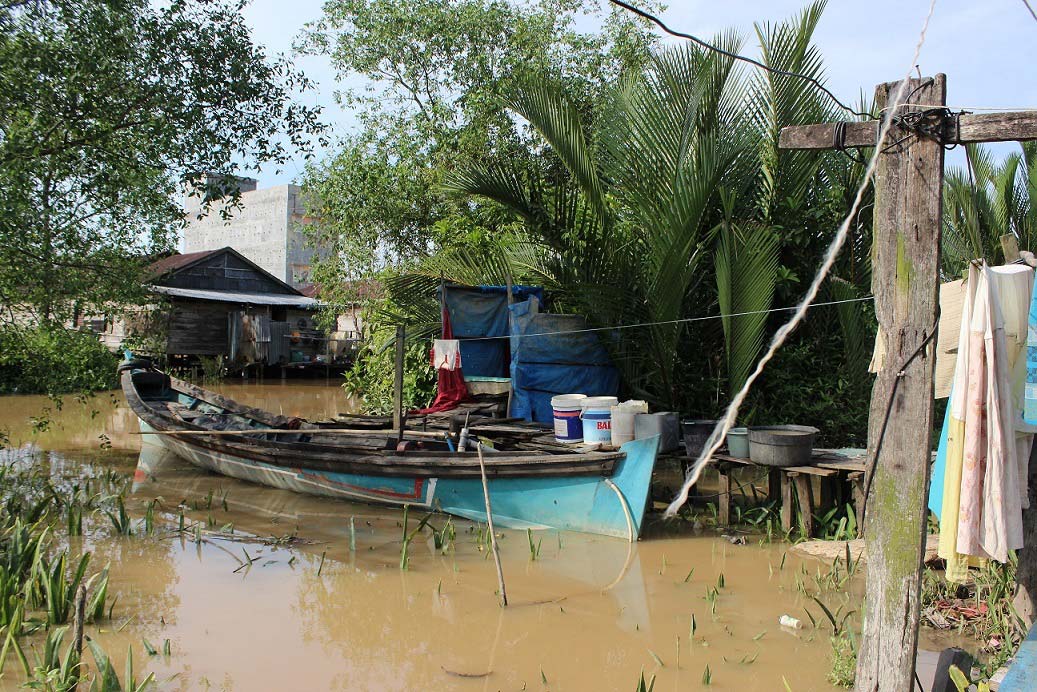Living in a Swamp, Health is at Stake

On the side of a paved road in East Muara Sabak, East Tanjung Jabung Regency, Jambi, there is a road made of wood. At first glance, the road looks similar to a bridge. Apart from its elongated shape, there is a pool of water under the road.
On the right and left of the road are houses on stilts. The houses in the East Muara Sabak area are indeed houses on stilts.
It is not without reason that the houses around the wooden road are on stilts. This is influenced by the location of their residence which is on a swamp. Its location near the estuary makes residents accustomed to tidal currents.
At low tide, there is no visible difference with the location of houses in general that stand on the ground. But when it is high tide, the water slowly begins to rise and form puddles.
“If the tide is high, the water can overflow to cover the road and enter the house,” said Husni (57), a resident who lives in the area.
Every day, residents of Muara Sabak Timur farm and work on the river. The types of agriculture that develop are coconut, areca nut, palm oil, and rice. In addition, there are also residents who are fishermen and swallow breeders.
Boats are not only used for fishing but also as a means of transporting people and crops. It is not surprising that many people live around the estuary. Living in a swampy area is certainly different from living in a dry area. But of course the stagnant water in the area cannot be consumed.
Wells are available, but the water looks murky. The depth of the well is approximately 50 meters. From the well, water is channeled to residents’ houses for household activities such as bathing and washing, but not for consumption. For consumption, residents usually buy refill water or distill rainwater.
Consumption of unclean water is hazardous to health, even if it has been cooked. Dirty water contains various kinds of bacteria. If it enters the stomach, the digestive system will be disrupted. Various health problems can easily arise.
Unfortunately, houses in the area are not equipped with bathing and washing facilities. The toilets are disposed of directly under the puddles. Although they do not directly use the stagnant water under the house, germs from the latrines can spread to the clean water used for bathing and washing.
Therefore, when building a house, residents need to pay attention to the location of the septic tank with the water source. The correct distance between the septic tank and the water source is 10 meters. In addition, the placement of septic tanks in other houses can also affect the cleanliness of the water source.
Unlike ordinary housing, the water source in swamp settlements comes from a single source. The water source does not look like a well. It is only 20 centimeters in diameter and made of pipes. The water is then channeled through a pipe that crosses the front of the residents’ houses.
The problem of living above water is not only related to water hygiene. Another problem that arises is the rampant mosquitoes.
“Mosquitoes need not be asked, there are a lot of them here,” explained Husni.
Mosquitoes do breed in standing water. The ebb and flow of water fills containers that turn perfectly into water reservoirs. That’s where mosquitoes feel comfortable laying their eggs. Residents’ health is clearly threatened.
Mosquito-borne diseases include malaria, dengue fever, elephantiasis and chikungunya. Currently, the zika virus is also being transmitted by mosquitoes. Previously, the zika virus had developed in Jambi.
Some time ago, Indonesia also tightened its security against migrants to avoid the spread of the zika virus. Zika virus is caused by the aedes aegypti mosquito. The virus will cause sufferers to experience fever.
The way to prevent the spread of this virus is to keep the place of residence clean so that mosquitoes are not comfortable breeding. Residents of Muara Sabak Timur who are accustomed to living in swamps are clearly easy prey. In addition to curative measures in the form of treatment, it takes extra work to keep the environment clean so that diseases are reluctant to stop by.
